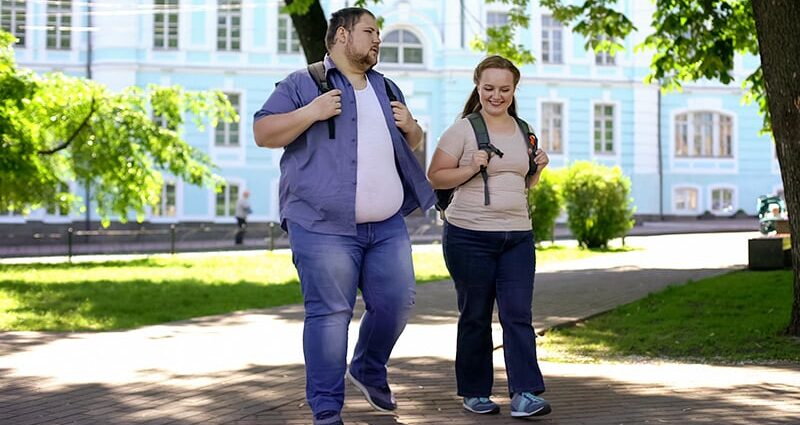TOPLINE:
Light-intensity walking reduces postprandial glucose and diastolic blood pressure in young adults with obesity and can improve insulin levels, depending on the walking pattern.
METHODOLOGY:
- Researchers conducted a randomized crossover trial with 16 young adults aged 18-34 years with body mass index (BMI) ≥ 25 in Bangkok, Thailand, to examine the effects of different light-intensity walking patterns on postprandial cardiometabolic responses.
- Participants (mean age, 25; mean BMI, 29.8) engaged in four 7-hour experimental conditions, each involving a different activity: Uninterrupted sitting, 30-minutes of light-intensity walking, 3-minute light-intensity walking every 30 minutes, or a combination of both walking regimens. There was a 7- to 20-day washout period between each experiment period.
- Baseline and 6-hour postprandial concentrations of glucose, insulin, triglycerides, and blood pressure were measured.
- Incremental areas under the curve (iAUC) for each outcome and average blood pressure were compared between sitting and walking conditions.
TAKEAWAY:
- All the walking interventions reduced postprandial glucose concentrations and diastolic blood pressure compared with uninterrupted sitting.
- Continuous 30-minute light-intensity walking alone or combined with brief 3-minute bouts also attenuated postprandial insulin concentrations.
- No significant differences were found for triglycerides iAUC and systolic blood pressure between the four experiment conditions.
IN PRACTICE:
“These findings support the notion that engaging in light-intensity walking, regardless of the pattern, provides benefits to glycemic control. Moreover, the timing and patterns of light-intensity physical activity may be an important factor in reducing postprandial insulin concentrations,” the authors wrote.
SOURCE:
The study, led by Waris Wongpipit, PhD, Division of Health and Physical Education, Chulalongkorn University in Bangkok, Thailand, was published online in The Journal of Clinical Endocrinology & Metabolism.
LIMITATIONS:
The study’s small sample size of 16 participants may limit the generalizability of the findings. The short duration of the study (7-hour experimental conditions) may not reflect long-term effects. The prescribed activities and dietary profiles, along with the controlled laboratory setting, may not accurately represent real-world conditions. The lack of objective physical activity/sedentary behavior measurement to confirm compliance between conditions is a limitation.
DISCLOSURES:
This study was supported by grants from the Office of the Permanent Secretary, Ministry of Higher Education, Science, Research and Innovation, Thailand Science Research and Innovation, and Chulalongkorn University. Wongpipit received grant support from these organizations. Paddy C. Dempsey is supported by a National Health and Medical Research Council of Australia research fellowship. The other authors had no disclosures.
This article was created using several editorial tools, including AI, as part of the process. Human editors reviewed this content before publication.

